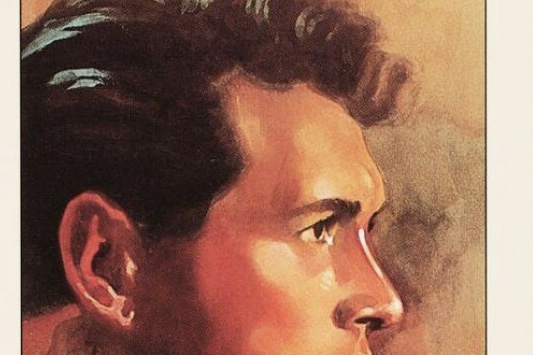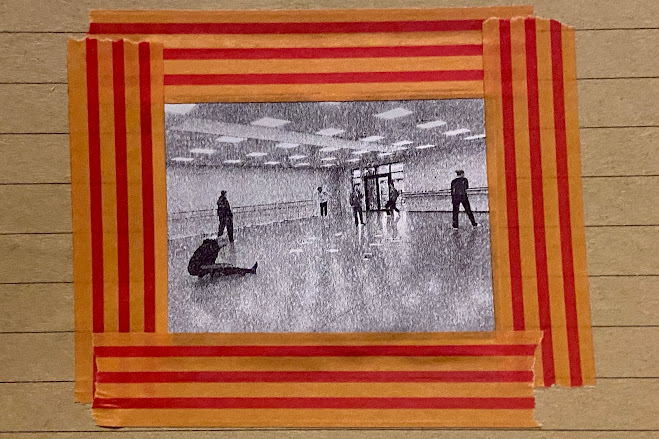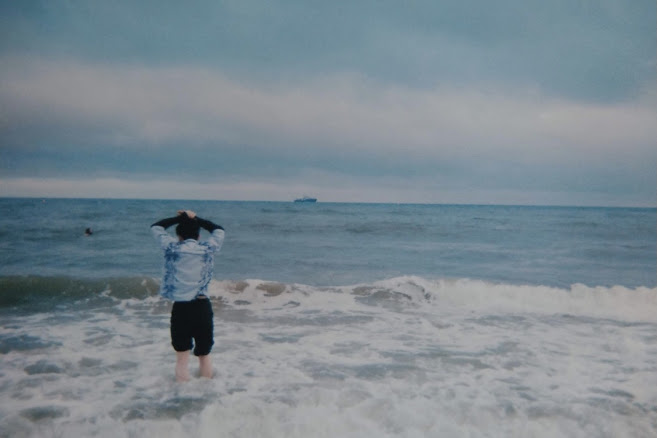2. keep moving don't move
Hello friends :)
I'm writing applications at the minute, I will leave my full time job in June and so I'm looking at opportunities for commissions and funding etc. I don't necessarily have a hard time with rejection - I think I have quite a healthy relationship to that part of what we do.
What I find crazy is the traces we leave through this process - whereby I come with so many ideas and someone else gets to say if, when and where they will happen. But the more I go through this process the more that excites me - I'd love at some point to host an exhibition with all the unsuccessful applications I've sent. Especially because I have a very specific design style through my applications, they are often incorporated within designs and expressed through some form of art writing. So they become little works of art.
I wrote a while back about this beautiful book Imagined Theatres: Writing for a Theoretical Stage (2017), which is a collection of theoretical performances. I would be very interested to further explore that side of my writing, I always get very frustrated with the critique that we should only use definitive language in applications - I shouldn't say "I hope this work will achieve..." rather I should say "this work will achieve..." I find more and more I don't trust people who are so definitive, I feel like hope is incredibly strong, not to mention extremely valuable in a research process. When I imagine writing an application form as a theoretical performance, however, my language becomes very definitive - there's a different awareness that even if I should be rejected I will still have created this performance in my fantasy. Which I think is pretty exciting!
Codebreakers and Groundbreakers (2017), an exhibition at The Fitzwilliam Museum displayed a report card of Alan Turing's - in which his physics teacher writes 'He has done some good work, but generally sets it down badly. He must remember that Cambridge will want sound knowledge rather than vague ideas.' It is of course a very different trajectory to a rejected contemporary dance performance idea, but I love the traces it leaves- it brings into materiality a parallel universe whereby acting upon that critique would divert Turing's career.
I have just written two proposals for CPH Made, a choreographic competition to make a short work on dancers from the Danish Royal Ballet, Danish Dance Theatre or Tivoli Ballet. I'm entering through a partnership with the company I currently work for - but I really struggled with the concept. I'm not so interested in making a work for dancers on a stage that an audience sit and watch in seats. My definition and interests of the choreographic forms are outside of this. Entering a competition is always weird - how should we judge these things, especially when we probably have completely different definitions of what choreography is itself. And when the majority of choreographic competitions probably require the choreographer to create something that is performed on stage to a seated audience, then how can I fit within that? By establishing the space in that way, you are choreographing me. And sometimes that can be a creative restraint - a consistent element to facilitate a more direct comparison between competitors. But it can also feel like a lack of recognition for what choreography can be?
So anyway, trying to make some ideas, writing for my theoretical stage and hopefully sticking to my guns - because I mean it's not really about winning or even being selected. It's about showing my taste and interests - because that's what I want to make.
image one - AIDS Awareness Trading Cards, V&A, Greg Loudon
image two - Report Card, The Fitzwilliam Museum
-
'Keep Moving Don't Move' - The Book of Traps and Lessons, Kae Tempest, Track 2



.jpeg)



Matthew I have to firstly say that I love the idea of both the these dances. This way of approaching applications fascinates me and had me thinking I wish I could send off artistic applications for ballet jobs! I also agree with this feeling of not trusting people who are too definitive. Ultimately there is so much that we can't know about a project until it is completed and it could kill the creativity to be too definitive. I think hope is a wonderful word and yet often in the arts it is seen as something not strong enough. It feels like you are either setting out to achieve it or it is not happening! But hope seems the bridge to all possibility. An exhibition of all the unsuccessful applications sounds fascinating, to make art from rejection, how wonderful. I think this post just inspired me to think about rejection in an entirely different way. Thank you :)
ReplyDeleteThis is so funny, I'm actually on this 'Actors UK' facebook group and people are so specific with how they critique headshots because they are not industry standard and I really struggle with anything like that. I believe an application should be a way to show who you are, and I think if that means sending in a painted self portrait instead of a headshot then go for it - could a ballet headshot be hand-painted?
DeleteIt it is hard of course because so much of the industry does work in this way...
I also see more self-trained professional actors than self trained professional ballet dancers? I can feel a bit that if the acting industry was less concerned with how much shoulder was showing in a headshot they could open up for even more diversity - or at least I hope that there are more important things to be learned from professional training. But that's a whole over debate on training and safety and privilege and things like that.
But yes to hope - 100% :)